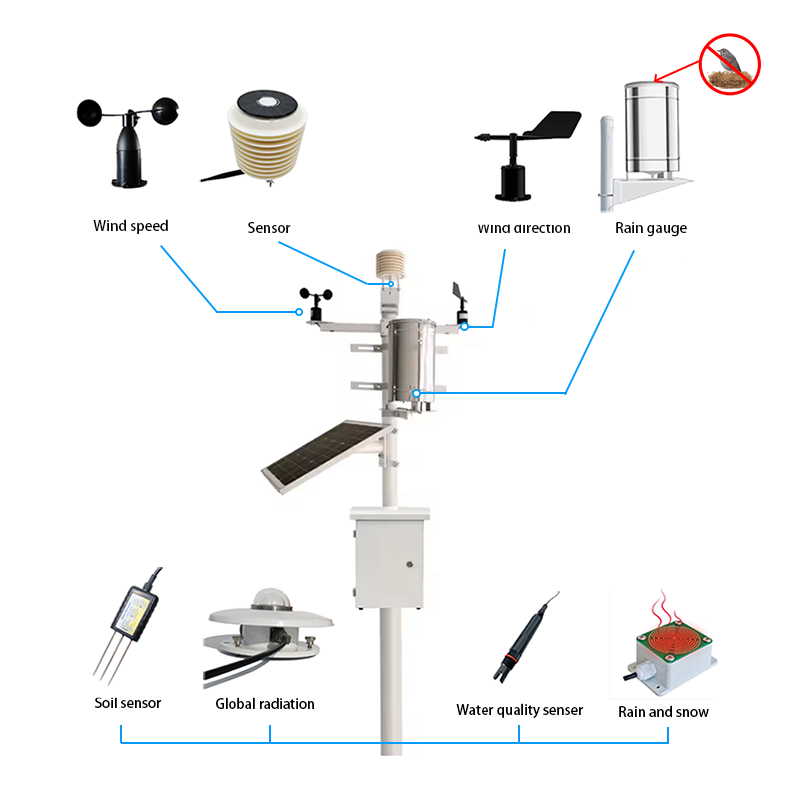Thanks to the efforts of the University of Wisconsin-Madison, a new era of weather data is dawning in Wisconsin.
Since the 1950s, Wisconsin’s weather has become increasingly unpredictable and extreme, creating problems for farmers, researchers and the public. But with a statewide network of weather stations known as a mesonet, the state will be better able to cope with future disruptions caused by climate change.
“Maisonettes can guide day-to-day decisions that protect crops, property and people’s lives, and support research, extension and education,” said faculty member Chris Kucharik, professor and chair of the Department of Agricultural Sciences at UW-Madison in partnership with Nelson. Ecological Institute. Kucharik is leading a major project to expand Wisconsin’s mesonet network, assisted by Mike Peters, director of the UW-Madison Agricultural Research Station.
Unlike many other agricultural states, Wisconsin’s current network of environmental monitoring stations is small. Nearly half of the 14 weather and soil monitoring stations are located at the University of Wisconsin Research Station, with the rest concentrated in private gardens in Kewaunee and Door counties. Data for these stations is currently stored in Mesonet at Michigan State University.
Going forward, these monitoring stations will be moved to a dedicated mesonet located in Wisconsin known as Wisconet, increasing the total number of monitoring stations to 90 to better monitor all areas of the state. This work was supported by a $2.3 million grant from the Wisconsin Rural Partnership, a USDA-funded Washington State University initiative, and a $1 million grant from the Wisconsin Alumni Research Foundation. Expanding the network is seen as a critical step in providing the highest quality data and information to those who need it.
Each station has equipment to measure the state of the atmosphere and soil. Ground-based instruments measure wind speed and direction, humidity, air temperature, solar radiation and precipitation. Measure soil temperature and moisture at a specific depth underground.
“Our producers rely on weather data every day to make critical decisions on their farms. This impacts planting, watering and harvesting,” said Tamas Houlihan, executive director of the Wisconsin Potato and Vegetable Growers Association (WPVGA). “We are therefore very excited about the possibility of using weather station system in the near future.”
In February, Kucharik presented the mesonet plan at the WPVGA Farmer Education Conference. Andy Dirks, a Wisconsin farmer and frequent collaborator with UW-Madison’s College of Agriculture and Life Sciences, was in the audience and liked what he heard.
“A lot of our agronomic decisions are based on current weather or what we expect in the next few hours or days,” Dilks said. “The goal is to store water, nutrients and crop protection products where they can be used by plants, but we cannot succeed unless we fully understand current air and soil conditions and what will happen in the near future . “, said Unforeseen heavy rain washed away the recently applied fertilizers.
The benefits that environmental intermediaries will bring to farmers are obvious, but many others will also benefit.
“The National Weather Service views these as valuable because of their ability to test and contribute to a better understanding of extreme events,” said Kucharik, who received his doctorate in atmospheric sciences from the University of Wisconsin.
Meteorological data can also help researchers, transportation authorities, environmental managers, construction managers and anyone whose work is affected by weather and soil conditions. These monitoring stations even have the potential to help support K-12 education, as school grounds can become potential sites for environmental monitoring stations.
“This is another way to expose more students to things that impact their daily lives,” Kucharik said. “You can relate this science to various other areas of agriculture, forestry and wildlife ecology.”
Installation of the new maisonette stations in Wisconsin is scheduled to begin this summer and be completed in the fall of 2026.
Post time: Aug-12-2024


